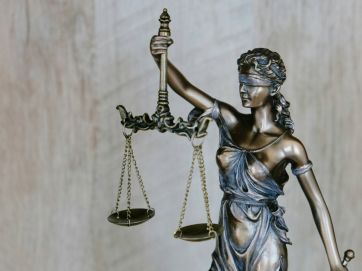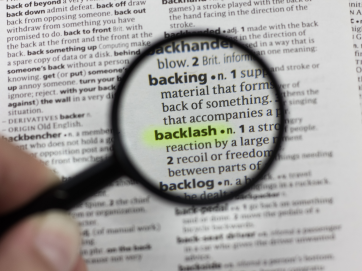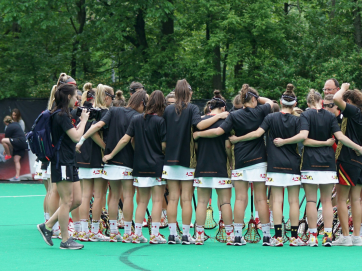The first President Bush once dismissively referred to “the vision thing.” Education associations from time to time cutely set forth “report cards” for their efforts. Folks who like to think of themselves as tough-minded steely-eyed analysts issue “reports on the leading indicators.” People who derive all their metaphors from the internal combustion engine like to speak of “dashboards.” I once attended a school board meeting where the agenda included a discussion of the parameters for the committee to plan the planning committee. A vision thing that looked like a hall of mirrors receding into infinity sprang to mind.
But no matter what we call it, organizations from time to time have to survey what they’ve done, where they are, and where they would like to go. The following is the first installment in a series of statements sizing up the National Association of Scholars’ situation and prospects. The occasion that prompts this series is the succession in the leadership of the organization. Our former chairman of the board, Stanley Rothman, stepped down at the end of the year and was replaced by Steve Balch, who relinquished the position as president he held since 1987. I have been appointed the new president. Much of my agenda for the NAS has been on display on this website over the last year and at our national conference in Washington this month. But it has been a long time since the National Association of Scholars has attempted a full statement of its goals, interests, and priorities.
I begin with our position on academic freedom.
Academic Freedom
The National Association of Scholars is a key voice for genuine academic freedom. In a certain sense—notwithstanding the hugely important role played by the Foundation for Individual Rights in Education (FIRE)—we are the principal proponent today in American higher education of academic freedom as it has been understood for most of the last one hundred years. Let’s start with the American Association of University Professors (AAUP).
The AAUP was created in 1915 by a coalition of scholars concerned about the actions of university governing boards that had punished or fired faculty members who had publicly advocated policies the boards disagreed with. The result of the AAUP’s deliberations was a document titled Declaration of Principles, which was approved in the two days from December 31, 1915 to January 1, 1916 at a meeting in Washington, D.C. It is a sober, plainly-worded, and entirely lucid document. The AAUP has never repudiated it, but it has issued new versions, the most famous of which appeared in 1940. In more recent decades, the AAUP has issued dozens of additional policy documents that vary widely in topic, tone, and one might say intellectual seriousness. Some of these seem in tension with earlier AAUP pronouncements, and a few present what look like outright contradictions.
On September 11, 2007, the AAUP issued a draft report (since finalized) titled Freedom in the Classroom. The NAS issued a line-by-line reply. Freedom in the Classroom argued that critics who complained that professors were abusing their academic freedom by attempting to “indoctrinate” their students on political questions were mistaken. Such indoctrination, said the authors of the report, rarely happens. The report concluded with the provocative proposition that the critics who complain about indoctrination act in bad faith. Their real purpose, say the authors, is to stir public anger against the universities in order to “further a particular political agenda.” The criticisms of supposed indoctrination, by this account, were really a means to bring “the coercive power of the state” to bear on faculty members.
Freedom in the Classroom ostensibly dealt with a factual issue: were there (are there still?) a significant number of faculty members attempting to “indoctrinate” their students? The writers elaborated the question by asking as well about instructors who fail to present relevant views that conflicted with their own, instructors who display religious prejudice, and instructors who persistently interject into class irrelevant material of an ideological character. After weighing what the report’s authors deemed sufficient evidence, it concluded that these things seldom happen.
The detailed refutation that Steve Balch and I published soon after the report was issued says pretty much all I have to say on these factual claims. The lynchpin of Freedom in the Classroom, however, is not factual argument. It is rather the odd epistemological claim that “knowledge” is whatever an academic discipline says it is. This claim serves the splendid function of absolving faculty members from most forms of intellectual responsibility, as long as they can fall back on saying some version of, “But my friends agree.” According to Freedom in the Classroom,
1. “Indoctrination” is what happens when “an instructor advances such propositions dogmatically.”
2. But faculty members can’t be fairly accused of dogmatism if they merely “expect students to comprehend ideas and apply knowledge that is accepted as true within a relevant discipline.”
Thus if a faculty member teaches his class that “The United States is the most racist society in the world,” this is not indoctrination if that proposition is “accepted as true” within, say, the Black Studies caucus of the Modern Language Association. Or if a faculty member teaches as fact the proposition that, “The Cold War was the result of anti-communist hysteria incited by capitalist interests,” this proposition is not indoctrination either, provided that it is “accepted as true” within some wing of the American Historical Association.
Relying on this trick definition of truth, the authors are able to make a mountain of evidence of widespread abuses in the classroom simply disappear. Disappearing the evidence by defining it as non-evidence seems a rather shabby way to deal with the question. For what it is worth, I myself am not too happy with the word “indoctrination” to describe what happens in most liberal arts classrooms. The problem is generally more subtle and consists of creating a climate of opinion in which everyone simply “knows” not to bring up certain subjects or to stick within a narrow range of acceptable opinions. Only clumsy professors need to resort to outright statements of orthodoxy—though some indeed do.
The vanishing act perpetrated in Freedom in the Classroom is a perfect example of how far the AAUP has strayed from its 1915 Declaration of Principles. Back then, the AAUP held:
The claim to freedom of teaching is made in the interest of the integrity and of the progress of scientific inquiry; it is, therefore, only those who carry on their work in the temper of the scientific inquirer who may justly assert this claim. The liberty of the scholar within the university to set forth his conclusions, be they what they may, is conditional by their being conclusions gained by a scholar’s methods and held in a scholar’s spirit; that is to say, they must be the fruits of competent and patient and sincere inquiry, and they must be set forth with dignity, courtesy, and temperateness of language.
The AAUP in 1915 indeed did hold an elevated view of the academic disciplines and the university faculty as a whole. The “dignity of a great profession,” according to the Declaration of Principles, requires that “the initial responsibility for the maintenance of its professional standards” should be in the hands of its own members, who must “assume this responsibility for themselves.” That’s the opposite of the buck-passing standard conjured by the authors of Freedom in the Classroom, where the faculty member can pretty much do as he pleases, providing he veers left, confident that no set of professional peers would dare question his actions.
But when Edwin Seligman (the principal author), Arthur Lovejoy, John Dewey, and the other authors of the 1915 Declaration wrote “assume responsibility for themselves,” they did not mean “assume the license to take no responsibility.” They were explicit: “If this profession should prove itself unwilling to purge its ranks of the incompetent and unworthy, or to prevent the freedom which it claims in the name of science from being used as a shelter for inefficiency, for superficiality, or for uncritical and intemperate partisanship, it is certain to be performed by others…” They shuddered at that prospect, but understood it clearly.
The AAUP in 1915, took “science” to be the basic model of scholarly inquiry that justifies academic freedom—science, because science offered the example of clear and publicly known standards for ascertaining the validity of an idea. The AAUP in 1915 also clearly saw “academic freedom” as part of a compact between faculty members and society at large. In gaining an enhanced sphere of autonomy, faculty members agreed to abide by enhanced standards of self-restraint and comity. In 1915, the AAUP vested the “absolute freedom of thought, of inquiry, and of teaching” not in the “individual scholar” but in “the academic profession.” We might add that the AAUP vested that authority not in the individual disciplines either, but in the academic profession as a whole. It expected the profession to stand for rigorous, scientific pursuit of truth, and in doing so prove itself “worthy” of academic freedom, but it allowed that “it is conceivable that our profession may prove unworthy of its high calling, and unfit to exercise the responsibilities that belong to it.”
And in 1915, the AAUP explicitly recognized that academic freedom applied to students as well as faculty members. The opening sentence of the Declaration of Principles notes that:
The term “academic freedom” has traditionally had two applications—to the freedom of the teacher and to that of the student, Lehrfreiheit and Lernfreiheit.
The Declaration focuses on the academic freedom of teachers but it keeps the academic freedom of students in view, warning that students should be trained “to think for themselves” and not to accept ready-made conclusions, and that teachers should approach their task with “due regard for character-building.” The word indoctrination makes an appearance here as well, not as an imaginary threat conjured by political opponents of the university, but as a genuine danger:
The teacher ought also to be especially on his guard against taking unfair advantage of the student’s immaturity by indoctrinating him with the teacher’s own opinions before the student has had an opportunity fairly to examine other opinions upon the matters of question, and before he has sufficient knowledge and ripeness of judgment to be entitled to form any definite opinion of his own.
In 1967, the AAUP joined with four other associations to issue a Joint Statement on Rights and Freedoms of Students, which was updated in 1990 (“to remove gender-specific references”) and reaffirmed in November 1992. It explicitly recognizes the “academic freedom of students,” and treats “freedom to teach and freedom to learn” as “inseparable facets of academic freedom.” In the AAUP’s 1967/1992 view, students’ academic freedom is grounded in “the transmission of knowledge, the pursuit of truth, the development of students, and the general well-being of society.” That language directly echoes the 1915 Declaration.
But the AAUP today has simply laid most of this aside. The notion that scientific inquiry is the model for scholarly self-regulation has disappeared. The idea that academic freedom arises from a compact with society has vanished. The view that academic freedom entails serious duties owed to the public has melted away. The vesting of responsibility in the “academic profession” has bowed out in favor of the right of the individual faculty member to do pretty much what he pleases. The very possibility that the academic profession may fall short of its high standards has been excised from the AAUP’s reckoning of the world. And the academic freedom of the student, though re-endorsed by the AAUP as recently as 1992, has become to all appearances a dead letter. In its frequent reprinting and posting of its earlier statements, the AAUP does not even present the 1915 statement.
Freedom in the Classroom commences with a quotation from the 1940 Statement of Principles, "teachers are entitled to freedom in the classroom in discussing their subject." This is a wholesome statement as long as “the subjects” have academic integrity. Once the teacher’s subject becomes a matter of the promotion of a political ideology or some free-form post-modern self-referentiality—matters never glimpsed in 1940—the statement dissolves into a claim that there are no legitimate bounds at all. The AAUP’s own example, later adopted by Stanley Fish in his New York Times blog, is to teach Moby Dick by comparing Ahab to President Bush, opening the classroom to an hour or so of rich invective on the theme of “I hate President George W. Bush.” A legitimate way to teach American literature? In the eyes of the AAUP it is.
The difference between those two versions of intellectual freedom was at the center of my debate a few weeks ago with Cary Nelson, the president of the AAUP. It comes down to this. The NAS supports academic freedom grounded in the pursuit of truth by disciplined forms of intellectual inquiry. That means the forms of inquiry that make scrupulous use of evidence and rational argument; that reject ad hominem attacks and doctrinaire pronouncements; that remain open and responsive to criticism; that respect the rights of students to learn in an unprejudiced way the best arguments on all sides of controversial intellectual issues; and that expect of scholars a degree of detachment from passions that may overrule reason in other contexts of life. Cary Nelson’s view—well, I am hesitant to paraphrase, since in the debate he refrained from saying exactly what he thinks “academic freedom” is, but I did on that occasion quote his definition from an earlier publication, and he didn’t abjure it. He had written that academic freedom “is the principle that guarantees faculty members the right to speak and write as they please without interference from the university, the state, or the public.”
Nelson’s definition is pleasingly terse and—superficially—attractive. The right to “speak and write as they please,” however, clearly differs from the right to pursue the truth according to disciplined forms of inquiry. The “as they please” approach throws up an unbreachable wall between faculty members and university administrations, government, and the public. The “pursue the truth” approach, by contrast, is a hedge with gates. The freedom of faculty members to pursue their disciplined inquiries is to be respected by university administrations, government, and the public, but these entities do retain an important stake in how faculty members employ their freedom.
Perhaps we should think of faculty members as the highly trusted workers in the national mint. They need a zone of autonomy to fulfill their responsibilities, but they have no absolute right to do “as they please.” If some of their number begin to debase the currency, adding counterfeit coins, or substituting their own images for the authorized ones, we would expect public intervention—and it would be legitimate.
The analogy goes only so far. It doesn’t instruct us on exactly when college trustees, state legislatures, alumni, or the public should be able to declare that a faculty member claiming to exercise academic freedom is really a counterfeiter. Of the nature of things, we would want the bar set high to prevent mere passionate disagreement with a professor’s views being mistaken for a well-founded complaint that the pursuit of truth has been sacrificed for some form of self-dealing.
Next
The NAS’s defense of academic freedom is a good reason why NAS should continue its work. But we face obstacles—above all the graying of our membership and the difficulty of attracting younger faculty members and other supporters. In the next installment of this essay, I will look back over the history of the NAS in pursuit of an answer to the question, “How did we reach this pass?” And I will begin to consider some of the cracks in the academic Left’s monolith.












